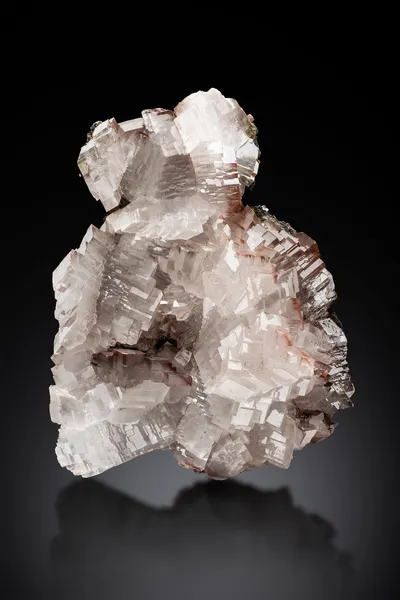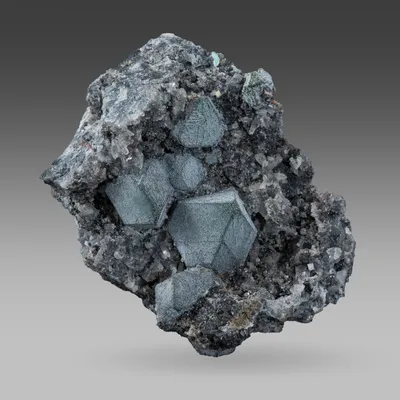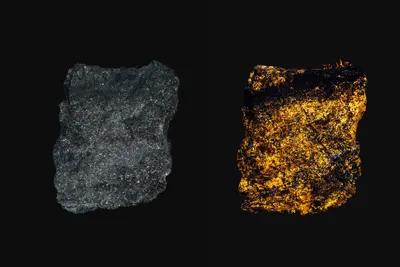Title
wurtzite
Composition
(Zn,Fe)S
Crystal System
Hexagonal
Status at Tsumeb
Believed valid
Abundance
Very rare
Distribution
Sulphide ores.
Paragenesis
Hypogene.
Type Locality
No
Entry Type
Species TSNB376
General Notes
Wurtzite is the hexagonal polymorph of sphalerite; several polytypes are known (Back 2022).
The earliest published description of wurtzite from Tsumeb was by Hurlbut (1957a) who studied several specimens provided by TCL courtesy of Drs Söhnge and Geier.
Although very rare at Tsumeb, concentrations of wurtzite were encountered:
"… in the 1940 and 1941 stopes near the west end of the steeply plunging pipelike Tsumeb ore body between the 17 (1595 ft.) and 20 (1890 ft.) levels. The minerals [wurtzite and greenockite] showed up in noteworthy concentrations in the footwall portion of the main lens of high-grade ore that was about 30 feet wide" (Hurlbut 1957a; citing locational information provided by TCL chief geologist Gerhard Söhnge).
Hurlbut (1957b) described and analysed three colour variants (green, brown and orange) of Zn-Cd sulfide from ores occurring between 17 and 20 levels and showed them to be intermediate compositional members of the wurtzite – greenockite series.
Söhnge (in Hurlbut 1957a) noted that ore from this zone averaged 13 wt % Cd (compared with an average of 0.2 % in mill-heads from run-of-mine ore).
"The Zn-Cd sulfides were scattered through a lead-rich, zinc-deficient mineral assemblage containing moderate amounts of pyrite, tennantite, bornite, chalcocite and digenite. The orange variety showed a marked concentration in chert and shale, the brown variety mostly in pseudo-aplite [= feldspathic sandstone], whereas no special preference was evident in the green variety. In order of abundance the brown sulfide predominated, the orange being subordinate whereas the green variety occurred only sporadically; all three, however, were closely associated within the cadmium bearing zone which appeared to have escaped supergene effects."
Hurlbut’s (1957a) analysis showed that the green sulphide contained 39.87 wt % Cd (41.5 mol %); the brown sulphide contained 49.34 wt % Cd (54.2 mol %) and the orange 49.75 wt % Cd (57.6 mol %). Refractive index, specific gravity and unit cell size were all shown to increase as a function of Cd content in a comparable fashion to synthetic members of the series. On the basis of Hurlbut’s analyses the brown and orange varieties are probably better described as zinc-rich greenockite (rather than wurtzite).
Geier (1973/74) noted that cadmium-bearing wurtzite was the main carrier of cadmium in the Tsumeb ore.
Pinch and Wilson (1977) reiterated that "Cd-wurtzite … with a Zn:Cd ratio of 1:1 has been reported" and that: "Orange, brown and green massive wurtzite and microscopic crystals of wurtzite occur rarely between the 18 and 19 levels."
According to Keller (1984) wurtzite occurs as lustrous orange-red grains that fluoresce orange under UV light.
Hughes (1987) merely restated the findings of Hurlbut (1957b), describing "cadmium-wurtzite" as "…moderately abundant at the western end of the ore body between 17 and 20 levels". His graphic (Hughes 1987; Fig. 71 on page 136) shows wurtzite as occurring between levels 17 and 22.
Gebhard (1999) recorded that crystals of orange, cadmium-bearing wurtzite to 5 mm were found between levels 18 and 19.
Associated Minerals
bornite; calcite; chalcocite; digenite; galena; greenockite; pyrite; quartz; sphalerite; tennantite-(Zn)





